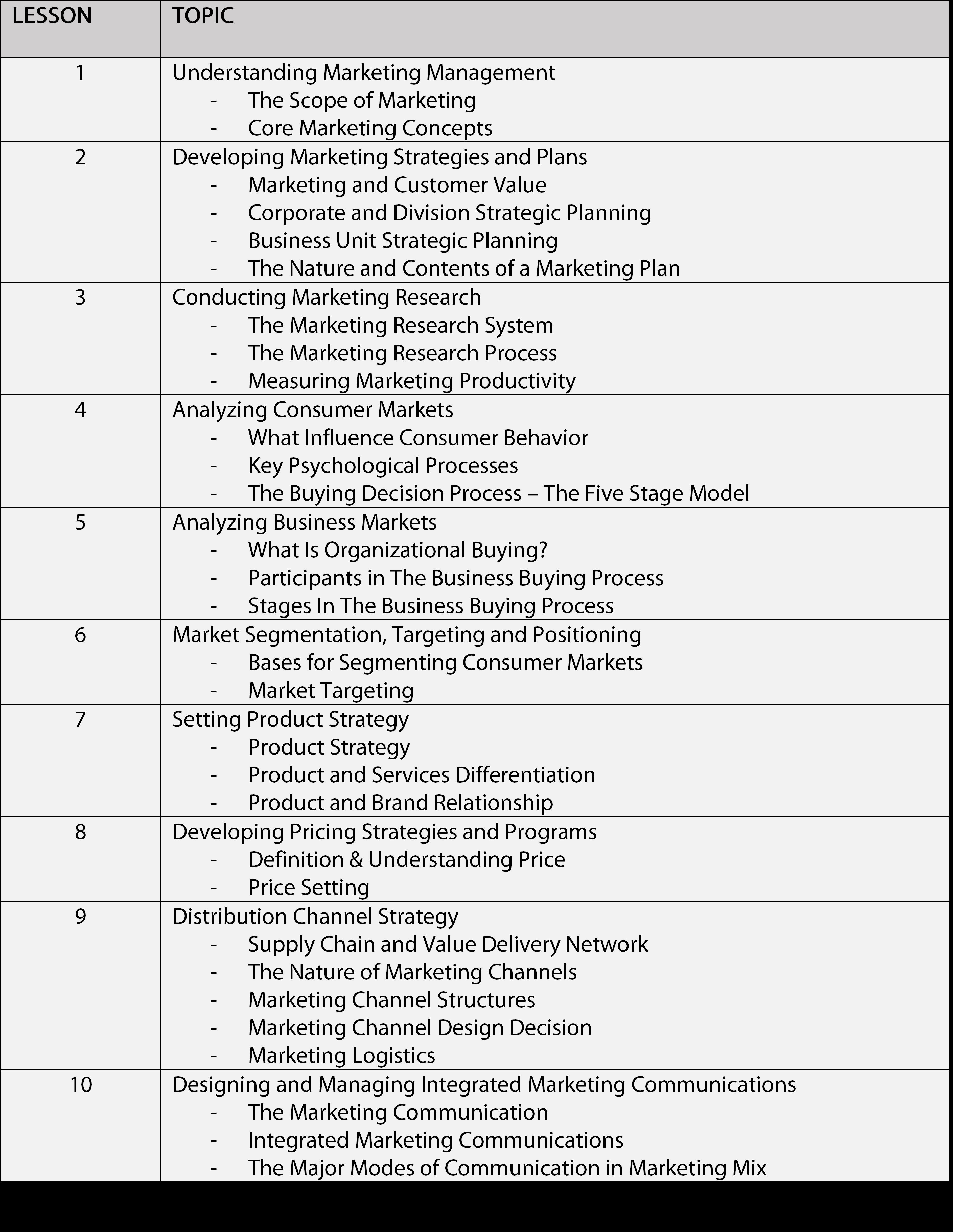Marketing Management

Welcome to Marketing Management – Module BM4403.
This module, BM4403 presents the knowledge and understanding about the importance of marketing management in companies. It imparts the concepts and principles involved in marketing of the company’s products and services and enabling the company to gain competitive position in the market.
The marketing function plays an important role in the sense that it is in contact with the external environment and acquires the necessary information for the development and improvement of the company’s operations and processes in order to attain the stability with the environment. It is the only function that brings in the financial returns to the company for the continuous operations of the other functions to provide the support to the marketing function.
I truly hope that, like your predecessors, you will enjoy the module and find that our ‘discussions’ enhance your understanding of the marketing management process.

